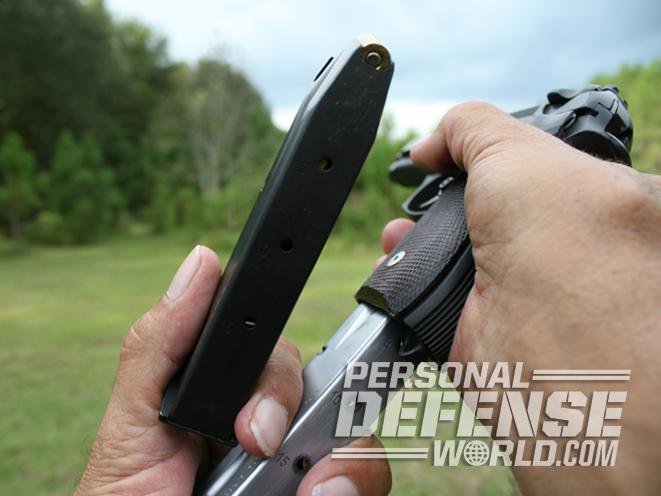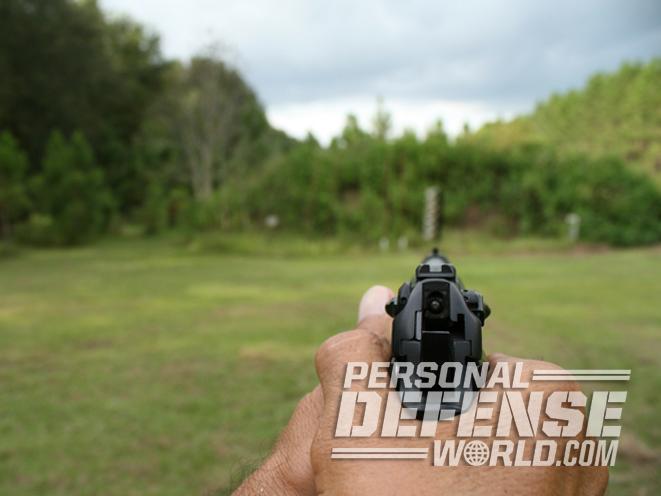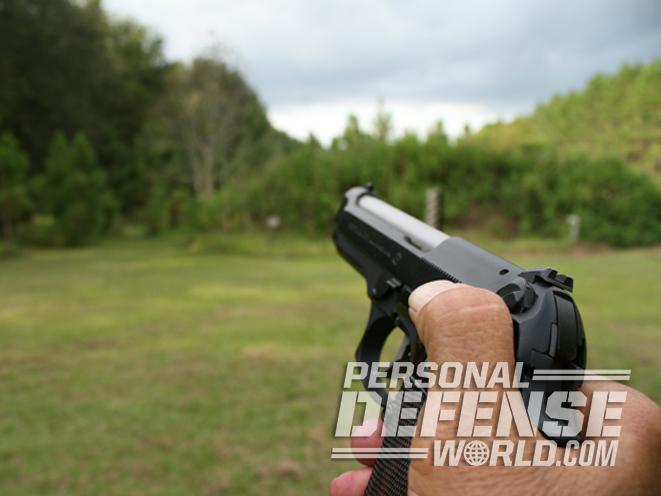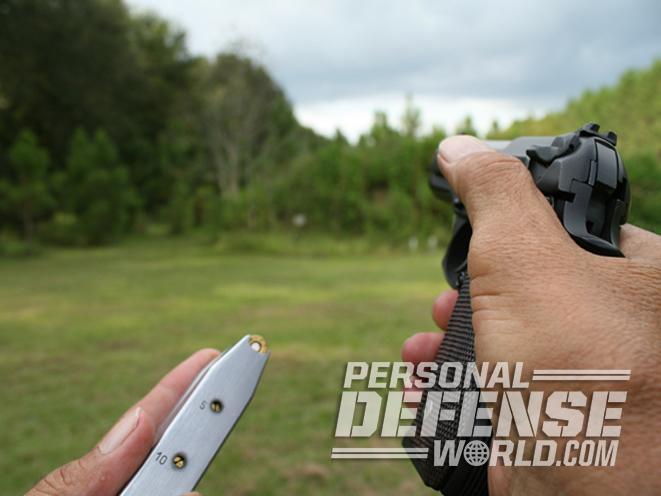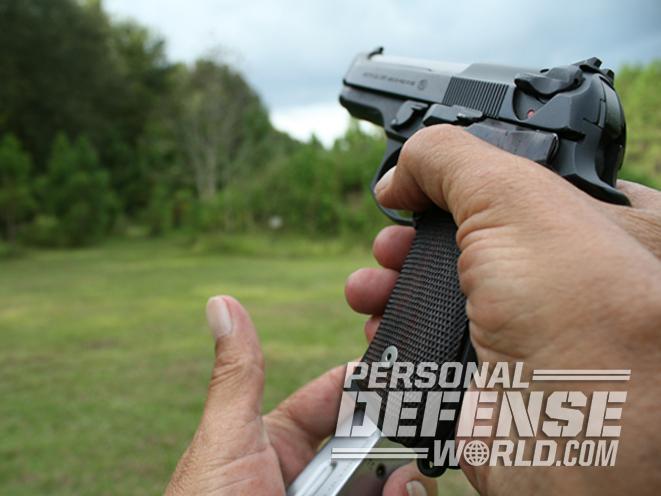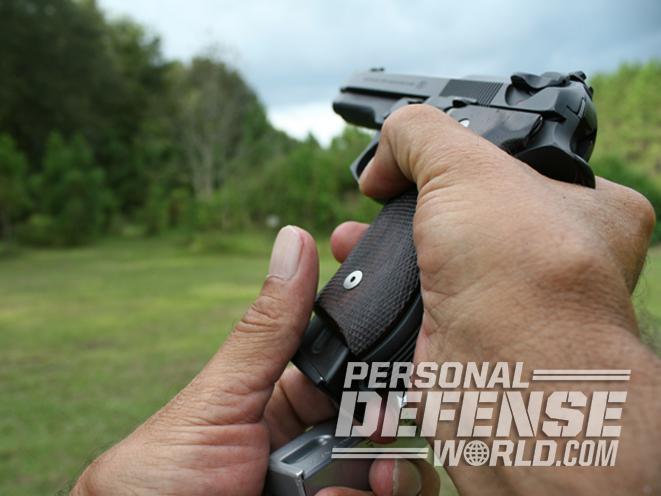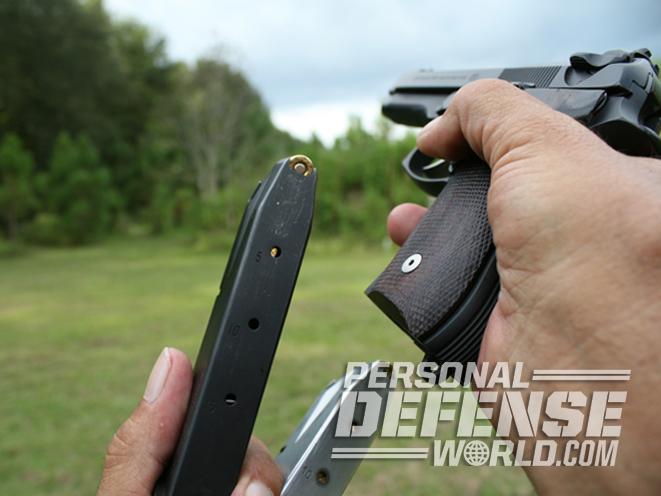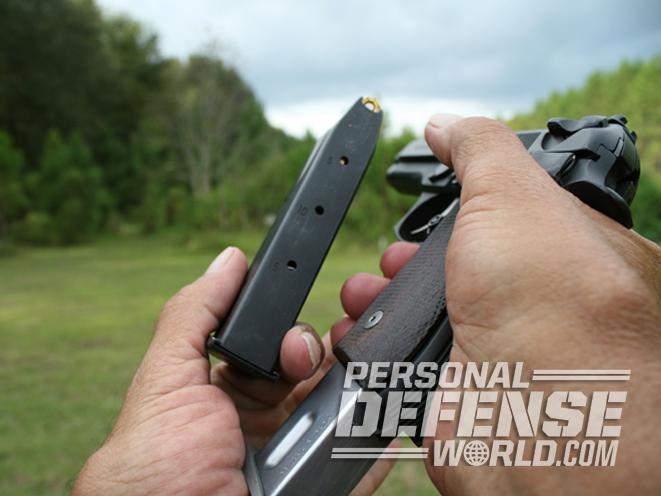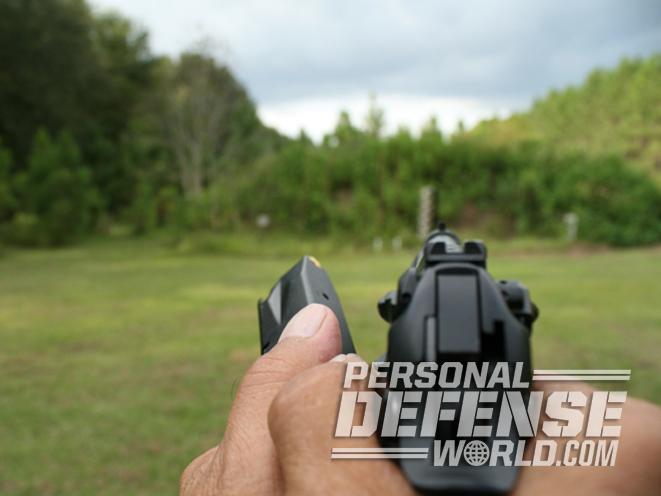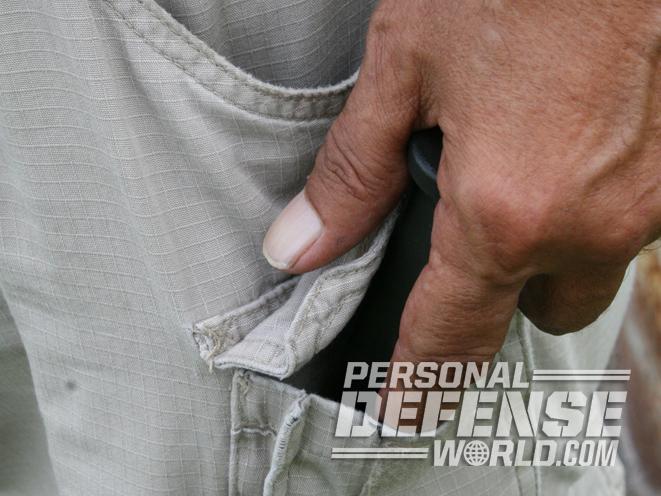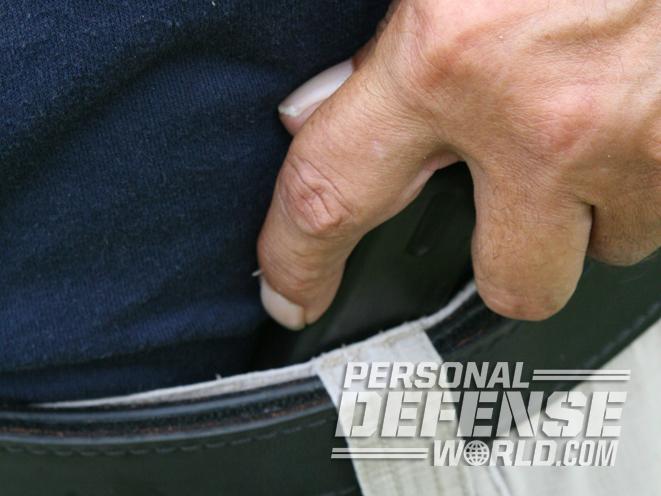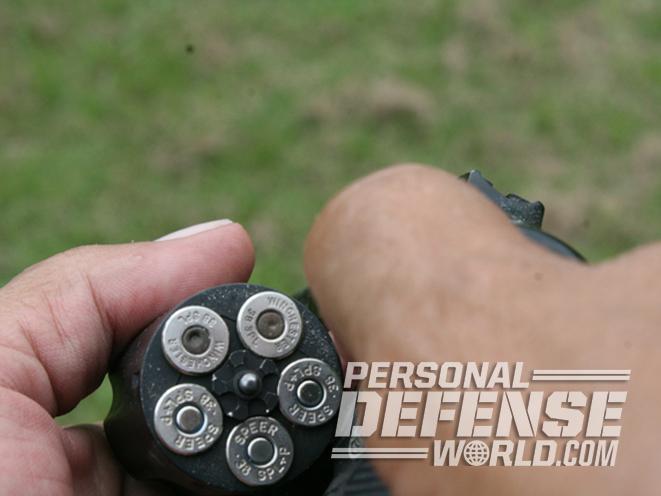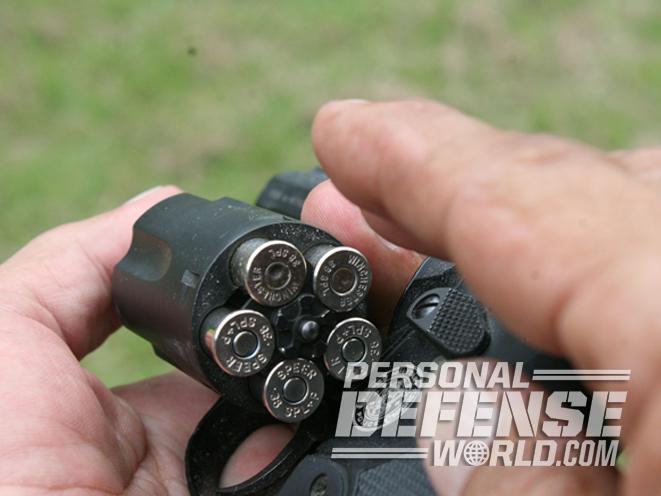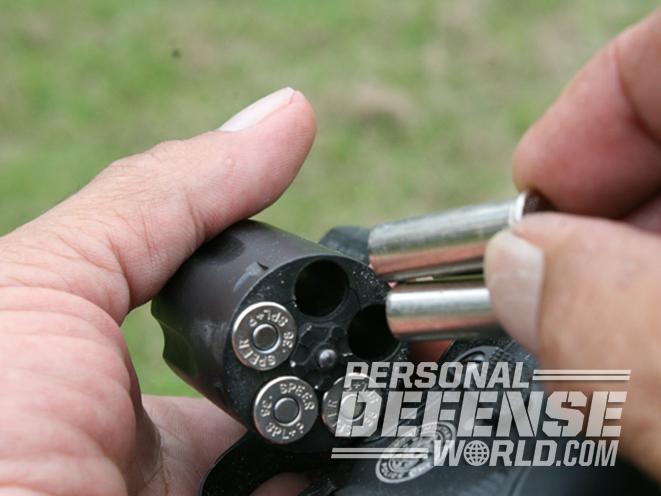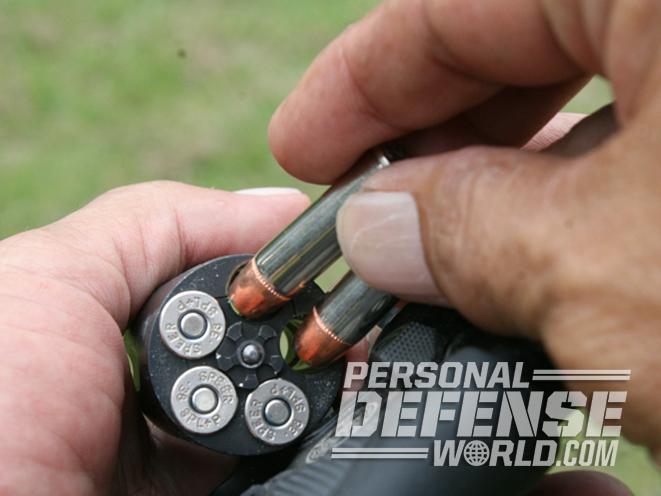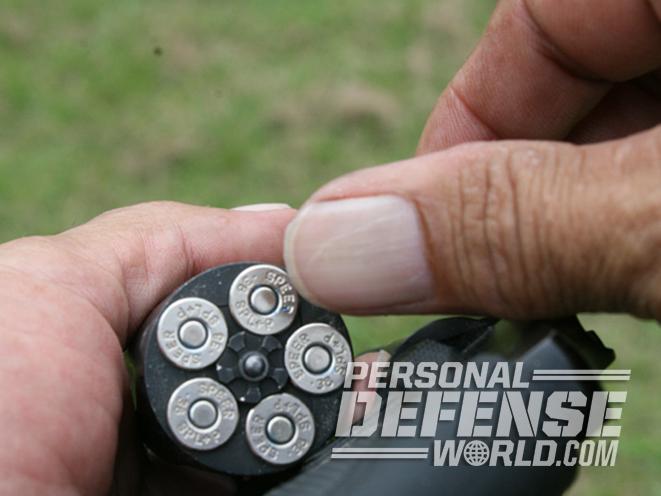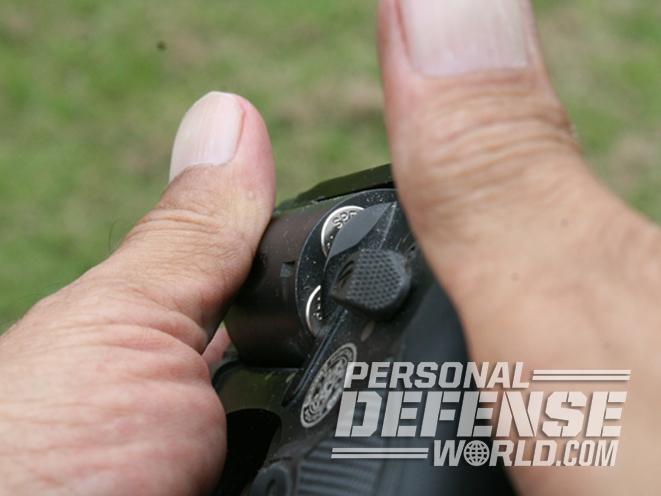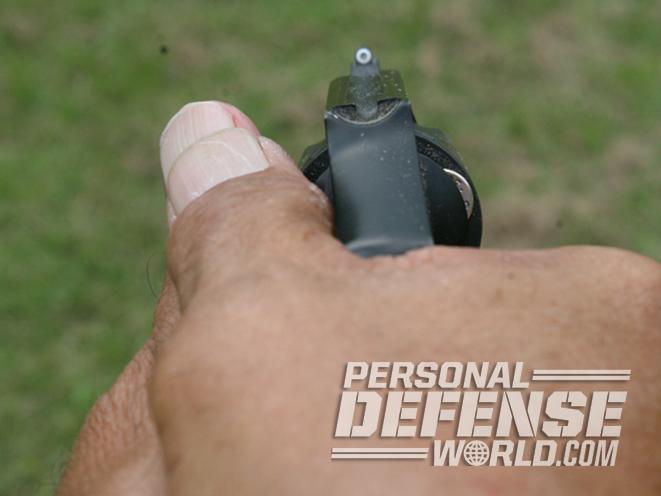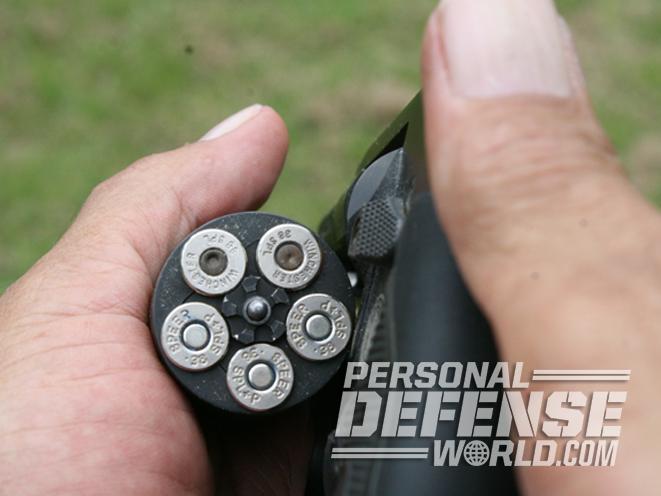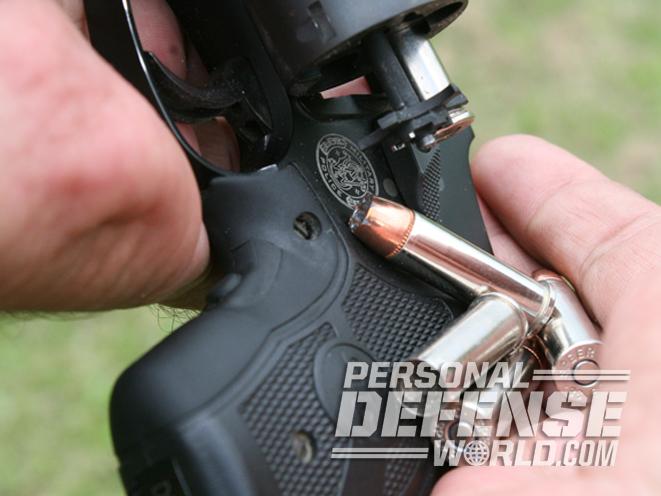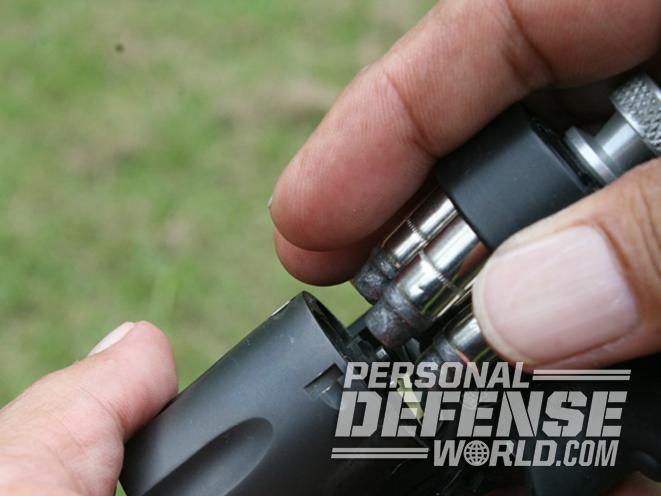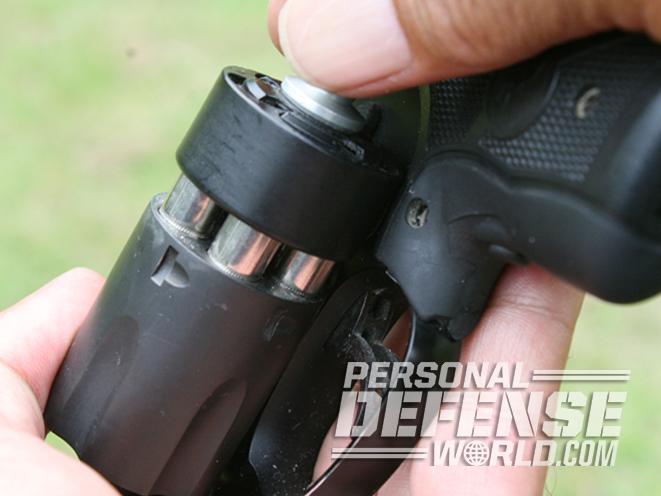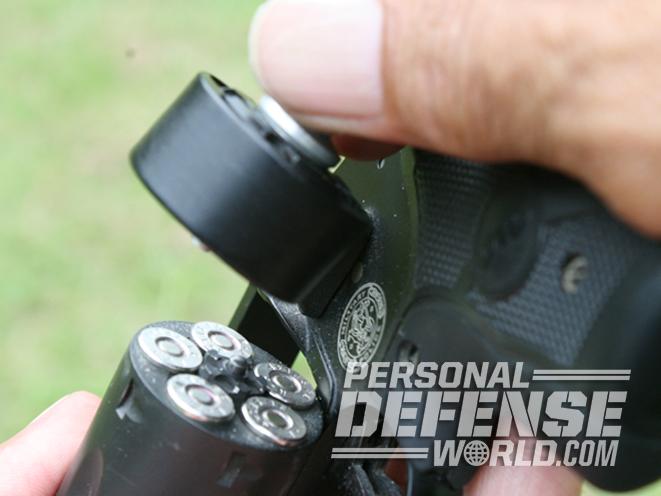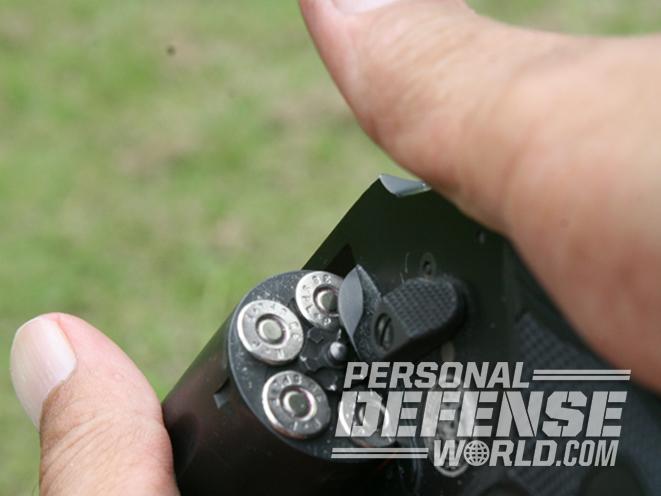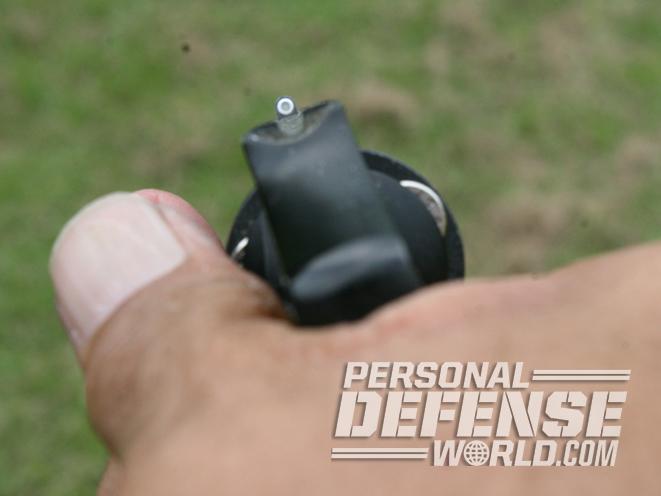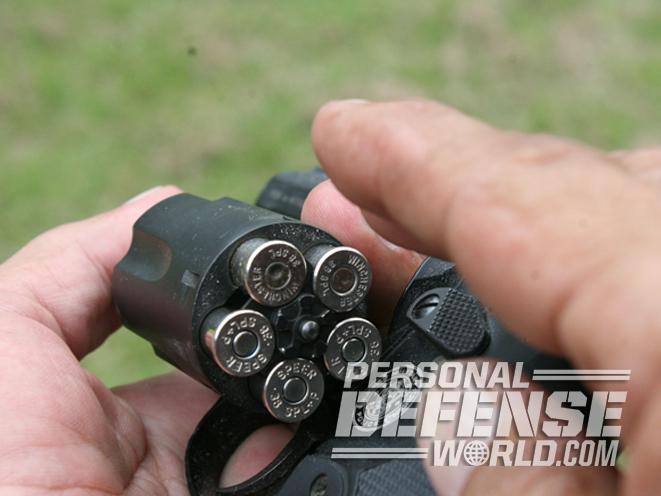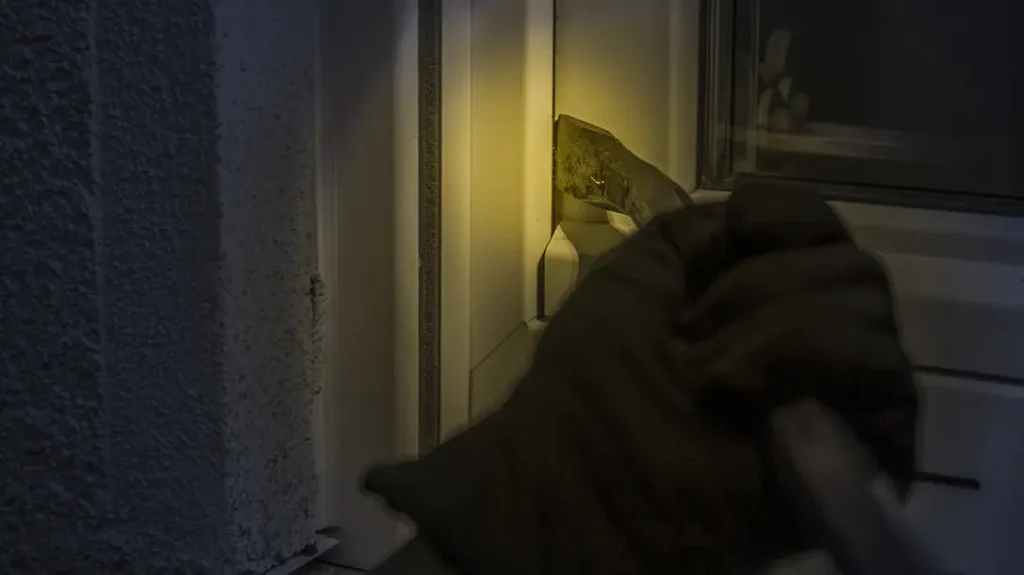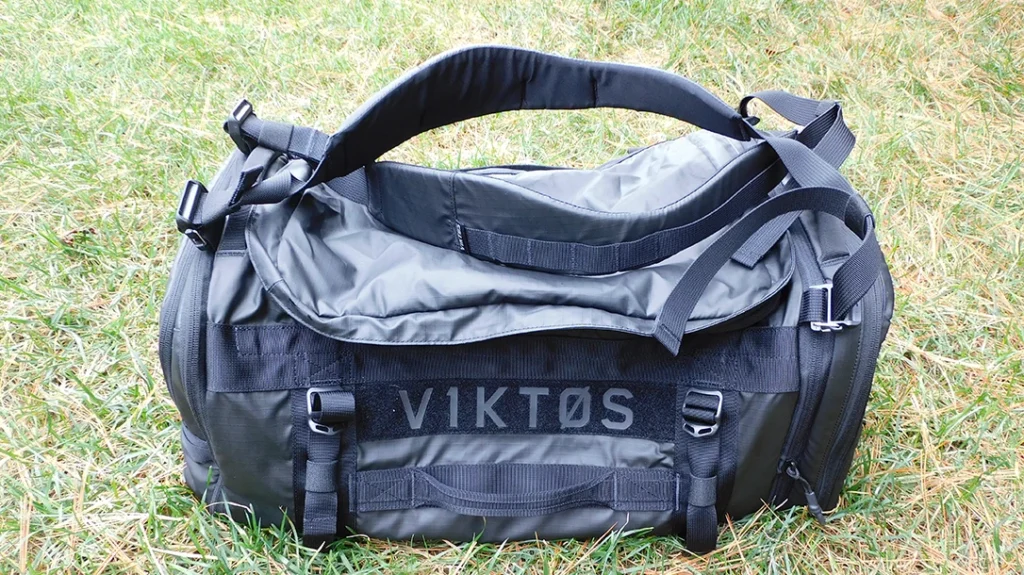If you’re reading this publication, you’re most likely familiar with the “speed reload,” sometimes called the “combat reload” or “emergency reload.”
Generally performed when the semi-auto’s slide locks back empty or the revolver clicks dry, it simply requires that the useless old stuff in the gun (empty magazine, spent revolver casings) be ejected, and desperately needed new stuff (a fresh magazine for the semi-auto, more cartridges for the revolver) be inserted. The gun is then returned to firing battery (slide or cylinder closed) so shooting can immediately resume.
The topic of this piece, the tactical reload, is distinctly different. The assumption is that you’ve fired some shots but still have one or more rounds of live ammunition that you do not want to throw away. The further assumption—a very important one—is that there is a lull in the action, a pause in which the shooter can safely juggle the old ammo out of the gun and into a retrievable place on their person, and get the gun topped off and ready to run with a full load.
Advertisement — Continue Reading Below
The most popular tactical reload taught today appears in the 1960 classic written by the late Colonel Jeff Cooper, Cooper on Handguns. The printed words don’t mention Cooper as source of the technique in his book, but they are illustrated with a picture of what appear to be Cooper’s hands, and what is most certainly the very distinctive custom Colt Government Model 1911 that was Cooper’s favorite pistol during that time period.
When Chuck Taylor was operations manager at Cooper’s Gunsite Academy, he was already a gun writer and in both capacities did much to quantify and popularize the concept of the tactical reload. Taylor continued that in his later endeavors when he was lead instructor at Front Sight, and head of his own school, the American Small Arms Academy.
The technique Colonel Cooper demonstrated more than half a century ago would be a good place to start the discussion of the mechanics of tactical reloads.
Advertisement — Continue Reading Below
Autopistol Reloads
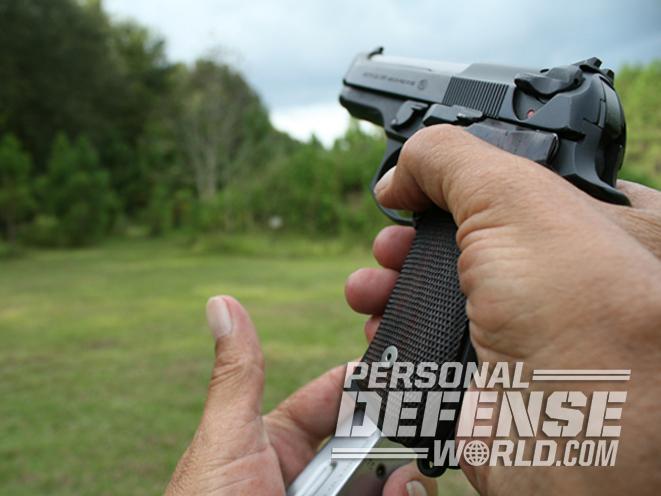
The technique Jeff Cooper demonstrated in his famous book is the one still taught at Gunsite and Thunder Ranch under the famed Clint Smith, another of Cooper’s right-hand men who earned fame in his own right. It goes like this, in its classic sequence.
Advertisement — Continue Reading Below
Remove your trigger finger from the triggerguard. Grasp a fresh magazine with your support hand and bring it up to the gun as it would for a speed reload. You want the tip of the index finger under the bullet nose of the topmost cartridge.
RELATED STORY: 12 Autopistols From the COMPLETE BOOK OF HANDGUNS 2016 Buyer’s Guide
As your reloading hand comes up to the gun, shift your index finger to the outside of the magazine. This will put the fresh magazine between the index finger and middle finger. This leaves the space between index finger and thumb—the web of the hand—free to grasp the depleted magazine as soon as it comes out of the pistol. The palm of the reloading hand is still under the floorplate of the fresh magazine and will be there to catch the depleted one, too.
Advertisement — Continue Reading Below
Now, press the magazine release button. The magazine in the gun should fall into the reloading hand, which is positioned under the gun butt. As soon as the floorplate of the partly spent magazine hits the palm, your thumb and forefinger grasp it and pull it the rest of the way out. The reloading hand now rotates to insert the fresh magazine and slap it in firmly. At this point, the reloading hand can take a support-hand position and scan the area.
Finally, with the pistol now fully reloaded, the shooter puts the depleted magazine away. It generally goes in a pocket or waistband, on the theory that this way it won’t be mistaken for a full magazine later when the practitioner makes a habituated reach to the magazine pouch when needing another complete reload. In theory, that partly spent magazine with its few remaining rounds is only being retained in the first place as something to be refilled later, after the fight, or an absolute last-ditch source of ammunition in case the lull in the action turns back into a firefight.
A few Additions
Advertisement — Continue Reading Below
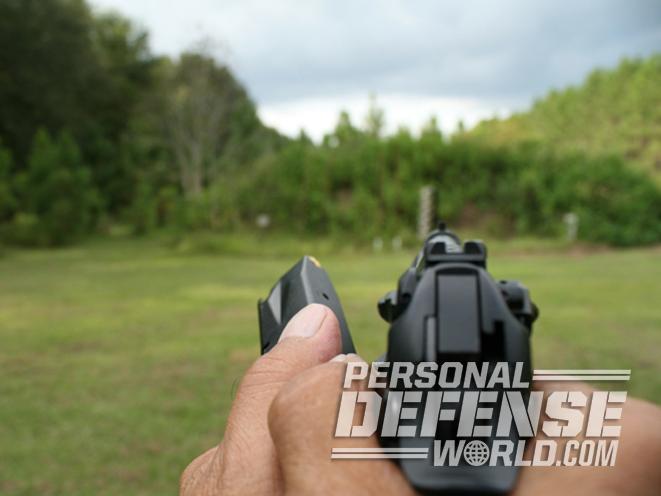
I know it seems presumptuous for anyone to offer suggestions to improve a technique that has stood the test of time for well over 50 years, but in a timeframe that long, practitioners and instructors can always come up with little tweaks that can make a protocol work better. With that in mind, I respectfully offer the following for your consideration.
First, at the same time that you take your finger out of the triggerguard to begin the tactical reload process, I would suggest that you put your single-action pistol on “safe” or decock your traditional double action. This is what a SEAL is trained to do with his double-action Sig Sauer P226 in one of those lulls in the action, and what I would expect a Gunsite graduate to do with his single-action 1911 under similar circumstances. The tactical reload procedure is a complex psycho-motor skill that is dependent on dexterity, and is therefore fumble-prone. This in turn leads to safety concerns, which logically call out for additional safety nets in the procedure.
Advertisement — Continue Reading Below
RELATED STORY: Reloading 101 – How To Load Your Own Ammunition
Second, as soon as the full magazine clicks solidly into place, I recommend that you condition yourself to perform a tactical 360-degree scan of your surroundings. The tactical reload sounds like exactly what it is: someone desperately trying to reload their gun. It is the sound of vulnerability, and may trigger a hidden opponent or one playing possum to immediately launch another deadly attack on your position. You want to be ready. This means that you will have practiced shooting two-handed while still holding that partial magazine in your support hand. It won’t be as efficient as a proper two-handed stance, but it will certainly put you in a better return-fire posture than shooting one-handed. Only after the scan would I personally stow the depleted magazine in a real-world situation.
Third, give careful consideration to where you stow the depleted magazine you’ve saved to keep those last few spare rounds on your person. If things get so desperate that you actually need to put them back in the gun, you want them someplace where you’re accustomed to reaching for spare ammunition. If you condition yourself to put the partial magazine in a pants pocket but never practice getting it back out of that pocket and back into the gun, you’ll be hard pressed to do so on autopilot when you’re actually fighting for your life.
Advertisement — Continue Reading Below
Reload With Retention
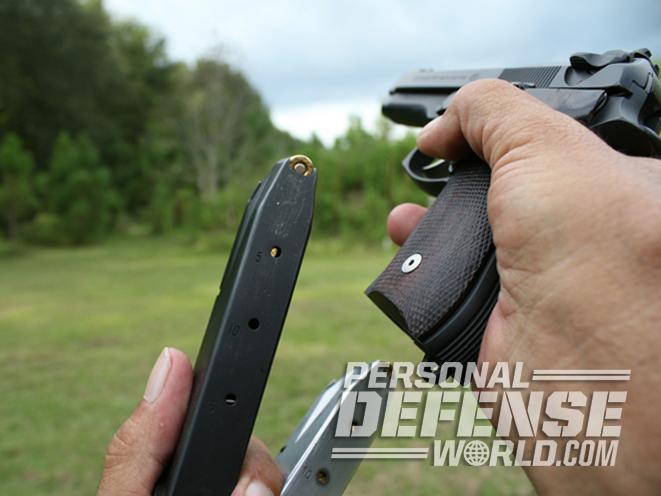
Popular in IDPA shooting, this technique is distinct from the true tactical reload in that the partial magazine is put away before the full one is inserted into the gun, instead of after the gun has been fully reloaded. This is because, for safety reasons due to the complicated manual of arms, the IDPA says that the tactical reload must be completed with the partial magazine stowed before the next shot is fired. Stowing the spare mag first is indeed more time-and-motion efficient if the goal is to get the magazine stowed the soonest and the next shot fired as soon as possible after that.
Advertisement — Continue Reading Below
However, reloading with retention creates a much longer window between when the last shot was fired and the next shot can be fired if the shooter is attacked during the reloading process. While the IDPA considers it unsafe to shoot while holding a magazine, I consider it more tactically unsafe to extend the window of vulnerability during which the shooter can’t return fire in the event of a secondary attack. Thus I practice reloading with retention only reluctantly, when shooting “for the team” in a match stage where a reload with retention offers a slightly faster time for purely competition purposes.
Revolver Reloads
With the conventional double-action revolver, the first tactical reload technique I learned was to open the cylinder and push the ejector rod slightly back, raising the rounds, and then release the rod. This would—hopefully—leave the spent casings extending upward, where fingertips could find them and pluck them out in the dark, allowing loose rounds from belt loops, pouches or speed strips to be inserted in their place. In practice, however, this technique was altogether too dependent on gently applied fine motor skills at a time when we would be predictably clumsy with adrenaline-shaking, vasoconstricted fingers and our strength accelerating out of control. It often led to all of the rounds on the ground, except for the ones that might be caught under the ejector star, horribly jamming the revolver.
RELATED STORY: Four .44 Magnum Revolvers to Shoot Or Own Before You Die
A better technique for tactically reloading a wheelgun is one I first saw demonstrated by famed instructor Dennis Tueller. He would use the FBI technique (open cylinder in left hand, left thumb on the ejector rod) to punch the rod and dump the cylinder’s entire contents into the right palm. The right hand would then stow the live and spent rounds alike in the pocket, hoping that in a desperate moment the hand could distinguish full-length live cartridges from empty shell casings. Once that stuff was in the pocket, the hand could grab a speedloader and quickly perform a fast combat reload, bringing a fully loaded revolver back into the fight as quickly as possible. This strikes me as the most practical approach to tactically reloading a revolver.
Going Further
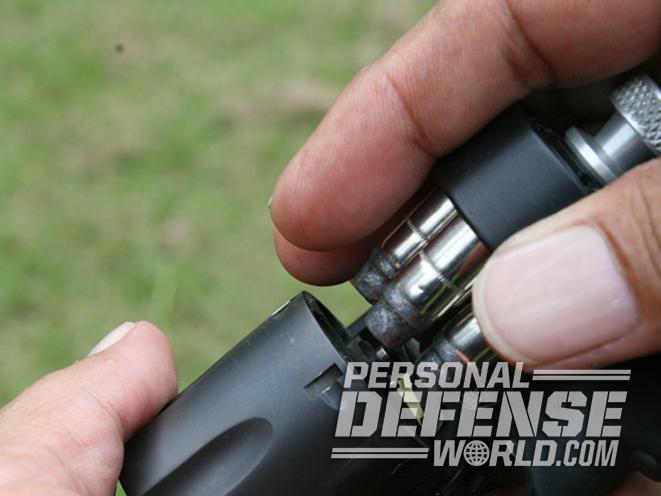
There are many combat veterans who feel there is no such thing as that proverbial “lull in the action” and recommend that every reload be a speed reload. They point to the well-publicized case on the Internet of a U.S. soldier in the war on terror. Facing multiple opponents, he cut one down with several rounds from his M4 rifle. Not sure how many rounds he had left, he attempted to perform a reload with retention. As he was stowing his partial magazine, he was attacked by a second enemy fighter. Unable to effectively return fire during that vulnerable window with only the one round left in his rifle, the American was shot by the enemy soldier. One of the AK bullets paralyzed the American permanently. In retrospect, he feels that if he had done a speed reload and attempted to retrieve the partial magazines later when he was sure the fight was over, he might have been able to neutralize the second deadly enemy before being shot and crippled for life. It’s logic that’s hard to gainsay.
RELATED STORY: The Best Ways To Carry Backup Ammo For Your Wheelgun
That said, there’s no question that the tactical reload makes theoretical sense, and it has proven its worth in actual firefights. Each practitioner must assess his or her own needs and threat profile, and make their own decisions. Personally, I have long since decided that the speed reload is the more important skill, and I teach it early in the first couple of days with a new student, reserving the tactical reload as a “second-tier skillset” not taught until the student’s second week at one of my schools.
There are many ways to perform a tactical reload. You may find some others better suited to your needs than the ones presented here. The techniques shown here have stood the test of time and are presented for your consideration, as potentially more tools for your toolbox.
